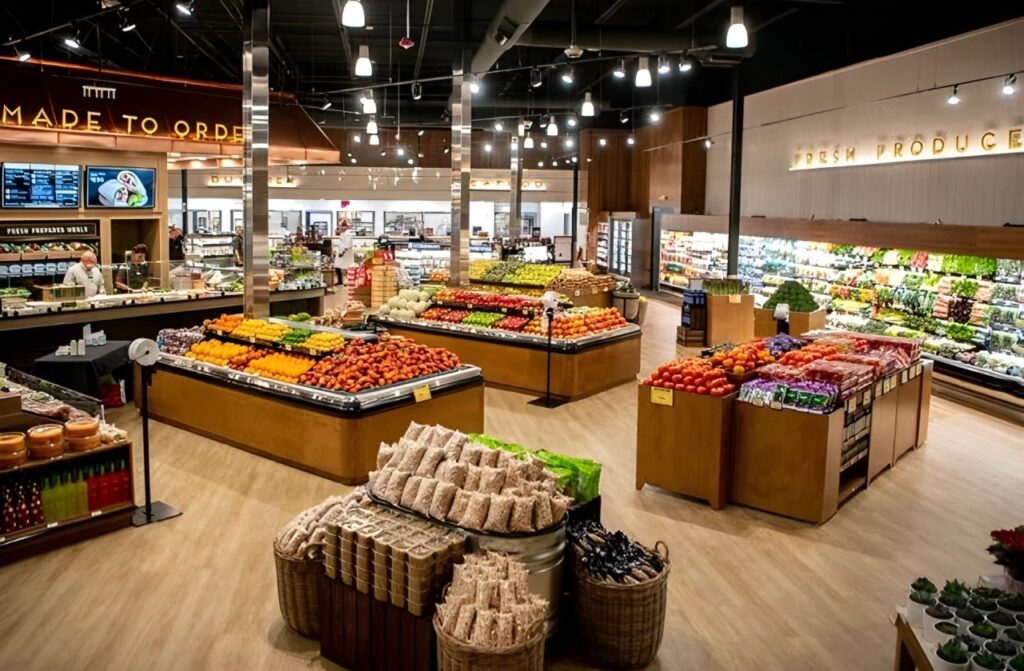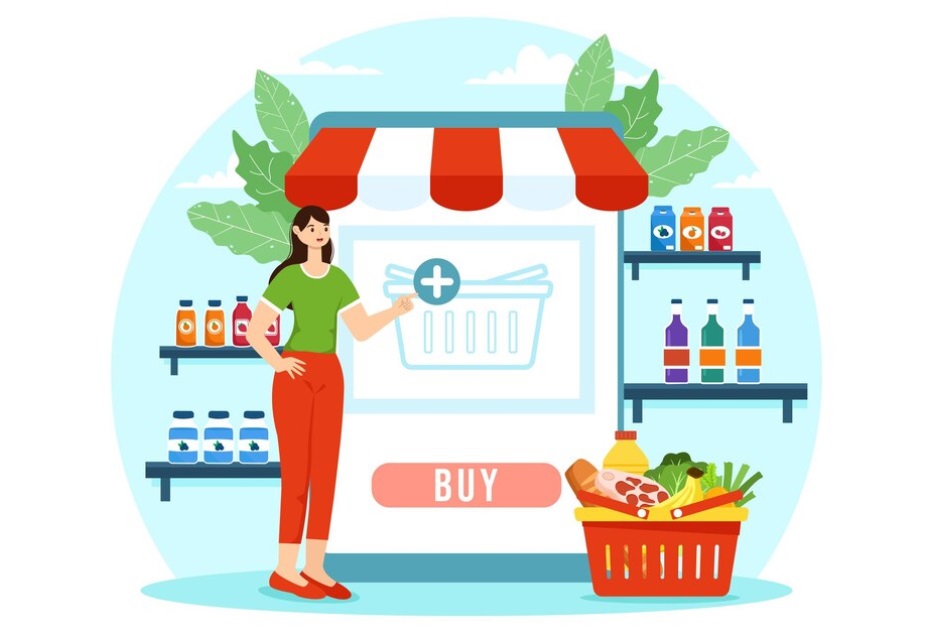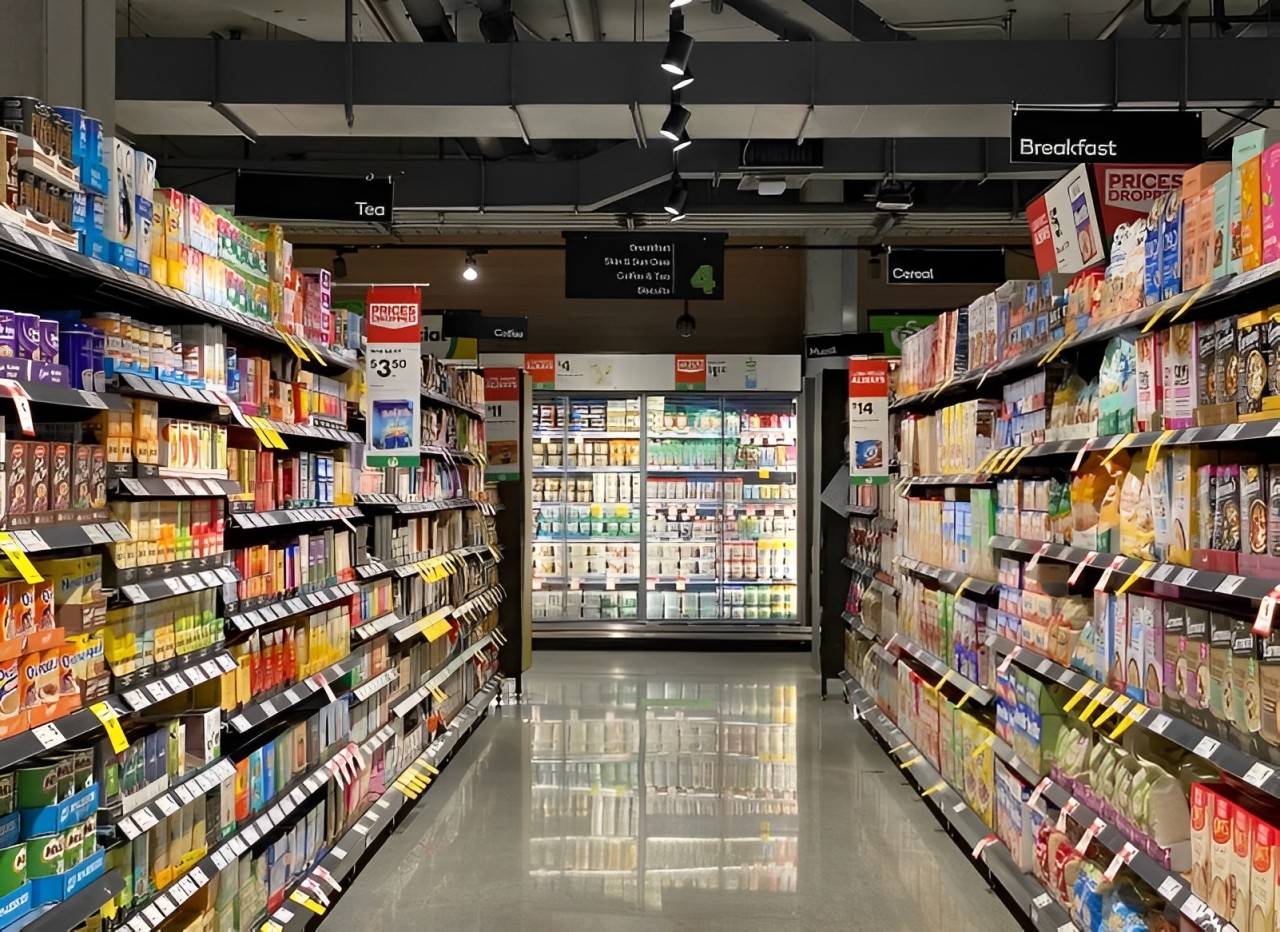Starting a grocery store business with a low investment requires a strategic approach and attention to detail. Conduct market research first to understand local demand and identify opportunities. A well-crafted business plan will be your guide, including goals, target demographics, pricing strategies, financial forecasts, etc.
It is important to select a prime location, which will help you reach your target customers easily, but opt for a smaller location initially to reduce further costs. Focus on maintaining supplies from local suppliers for critical and fast-moving consumer goods and appraisals. Build strong relationships and negotiate favorable terms to nurture good supplier relationships.

Implement cost-effective marketing measures such as discounts on energy use and bulk buying to maximize profits. Use cost-effective marketing measures such as social media promotions, local advertising and introductory discounts to attract and retain customers. Providing excellent customer service can maintain loyalty and differentiate your store in a competitive market.
Follow local laws and obtain necessary licenses and permits. As your Grocery Store Business grows, reinvest to increase profits and move to as many locations as possible. Resolutely adapt to changing market trends and customer preferences to maintain long-term success in grocery retail.
Table of Contents
STEP 1. Update high quality raw materials for a successful
Starting a grocery store business primarily requires securing the essential ingredients that form the core of customers’ daily consumption. These include rice, pulses, spices, and other household needs, which are available and priced in local markets.
The key to success lies in establishing strong relationships with suppliers who can consistently provide these items at competitive prices and ensure a stable supply chain. This not only guarantees product availability but also ensures flexibility in pricing strategies to stay competitive in the market.
In addition to securing ingredients, effective inventory management is important. This includes maintaining adequate stock levels of fast-moving and specialty items to meet customer demand and reduce wastage.

Packaging materials play a vital role in this process, as it helps maintain the quality and appeal of the product. Investing in excellent packaging such as bags, containers, and labels not only ensures freshness of ingredients but also enhances the visual presentation of products on store shelves, attracting customers and encouraging repeat visits.
By focusing on these fundamental aspects finding reliable ingredients, building strong supplier relationships, and employing effective inventory and packaging strategies you can build a grocery store business that meets the diverse needs of customers and fosters sustainable growth and profitability over time.
This approach ensures that your store not only becomes a reliable source of daily necessities but also stands out in a competitive market environment.
STEP 2. Discover All Your Essentials Under One Roof
To increase sales potential in your grocery store, it is extremely important to manage your inventory systematically to meet the diverse needs of your customers. By maintaining a wide stock of household needs, from pantry staples like cereals and spices to daily necessities like basic linens and cleaning supplies, you ensure that customers can get everything in one place.
This strategy not only increases customer satisfaction by reducing the need for them to visit multiple stores, but also builds loyalty and encourages repeat visits.
Effective inventory management plays a vital role in this process. Regularly evaluating demand trends, replenishing stock quickly, and ensuring correct shelf labeling contribute to a well-organized store environment.

Clear aisle maps and strategically placed displays also enhance the shopping experience, making it easier for customers to find items faster. In addition, offering different brands and package sizes helps you meet different tastes and budget requirements, allowing you to attract a larger customer base.
By placing priority on product availability and customer convenience, you create a positive shopping experience that not only meets expectations but also satisfies them more than most. This approach not only increases sales, but also solidifies your store’s reputation as a reliable provider of household essentials.
Sensitively maintaining stock levels and responding to customer feedback in a timely manner ensures continued success across a variety of your customer contexts.
STEP 3. Grocery Store Business: Important Investment Points
Starting a Grocery Store Business requires a significant initial investment, which normally ranges between ₹85,000 and ₹1,00,000. This financial dedication is primarily divided into several key areas to successfully start and run the Grocery Store Business.
First, a large portion of this investment goes into purchasing inventory. A grocery store requires a wide variety of products ranging from fresh produce to packaged goods and household necessities. It is important to allocate finances for purchasing initial stocks so that the store can meet the diverse needs of its customers from day one.
Second, investment is required in setting up the physical space of the grocery store. This includes shelving units, refrigeration equipment for chilled products such as dairy and meat, display boxes for bakery goods, and storage facilities for bulk items. These infrastructure investments not only ensure convenient display and storage of products, but also improve the customer experience by ensuring that products are clean and readily available.

Thirdly, operating costs must also be taken into consideration. This includes expenses such as rent deposits, utility connections, initial marketing efforts to attract customers, and perhaps hiring the first employees depending on the financial situation. These expenses are important to establish a professional and attractive grocery store environment that will enable the store to compete competitively in the local market.
Additionally, the initial investment also covers emergency and miscellaneous expenses that may arise in the setup phase. This ensures that the Grocery Store Business can adjust to unexpected challenges or additional requirements when it starts.
In essence, the initial investment is a significant part of starting a Grocery Store Business that helps lay a strong foundation. This not only covers the core requirements like inventory and infrastructure, but also ensures that the Grocery Store Business can deliver value to customers and is fully prepared for success and operability in the local retail landscape. Hence, the grocery retail industry
STEP 4. Packaged Excellence: The New Standard for Quality and Convenience
In today’s increasingly competitive Grocery Store Business environment, especially in the grocery sector, the decision to stock packaged items is important for several key reasons. First and foremost, packaged items undergo stringent quality control measures and are sealed in a hygienic environment.
This process ensures that from production to the consumer, the integrity of the product is protected, minimising the risk of any contamination and eliminating any lapse in hygiene standards. This is especially important when consumers value health-related sales and the safety of the products they purchase.
Additionally, providing packaged items in our store gives us the ability to cater to the various tastes and requirements of customers. Packaged items include clear labelling that includes nutrition information, ingredients list, and expiry date, allowing consumers to make informed decisions based on their dietary needs and preferences.
This transparency not only builds trust, but it also increases customer satisfaction, as they can rely on the consistency and reliability of the products they purchase.

From a Grocery Store Business perspective, stocking packaged items can streamline inventory management and reduce operational complexities. These products also have a higher appeal, which reduces wastage and makes storage space more efficient.
This efficiency becomes a source of profit and profitability improvements for our Grocery Store Business, allowing us to reinvest resources in improving customer experiences and expanding our product offering.
Furthermore, in a competitive retail landscape, where brand reputation and customer trust play a critical role, presenting clean, neat and safe packaged items reinforces our commitment to quality and reliability. It establishes us as a trusted destination where discerning shoppers prioritize both their health and convenience.
In conclusion, the decision to focus on packaged items in our grocery stores is not just about meeting regulatory standards; it is about exceeding consumer expectations and being a competitive destination in a huge market.
To watch the video, click the link below…
Click the link to read the recent Post business idea 25
Starting a Disposable Plates Business on a Budget: Path to Success

